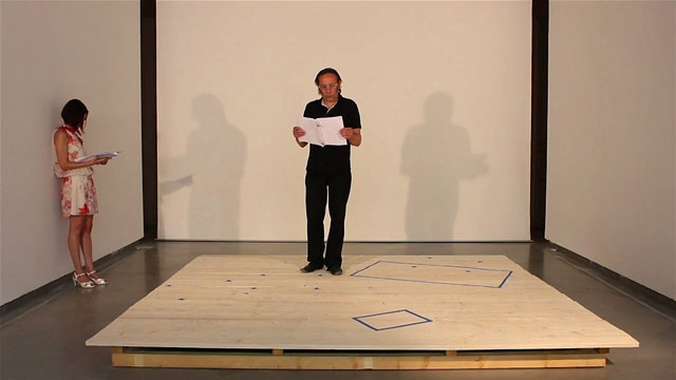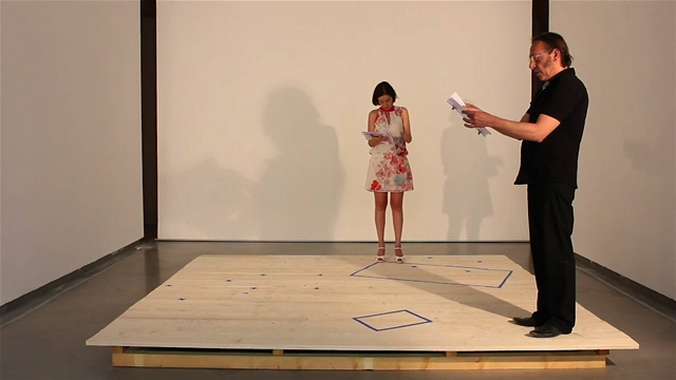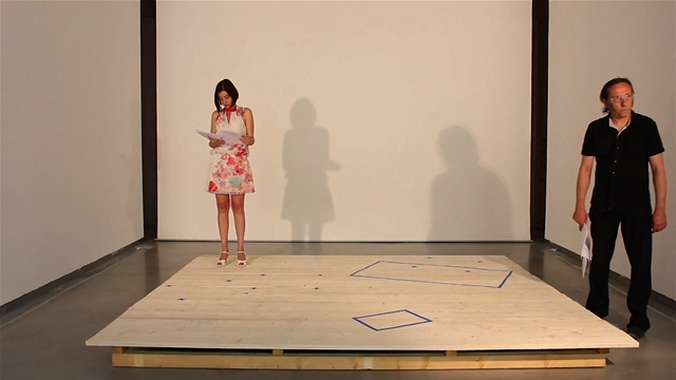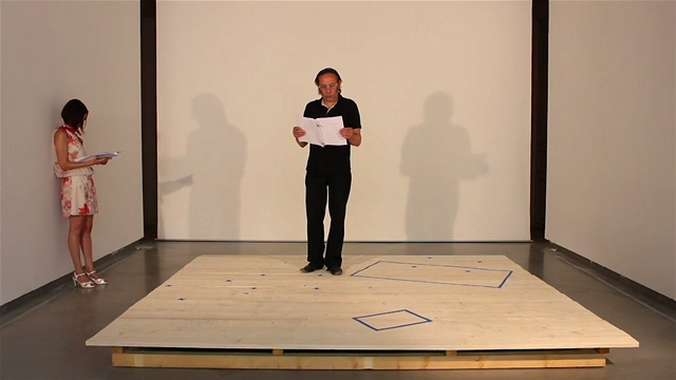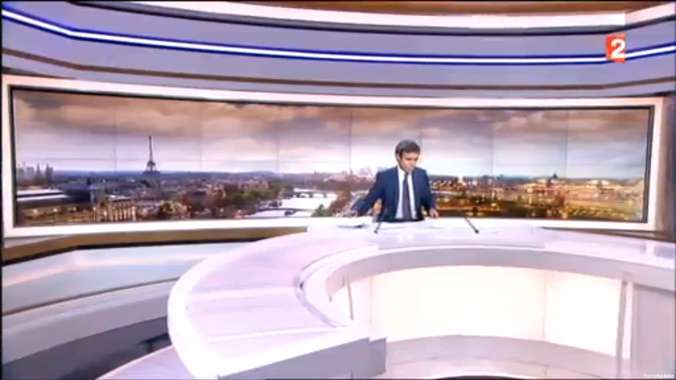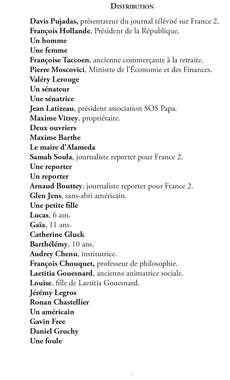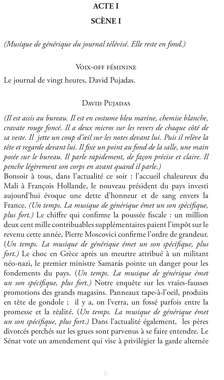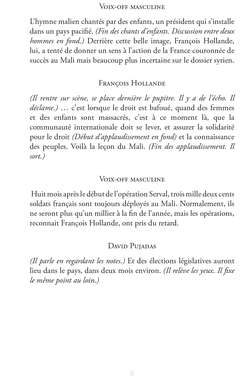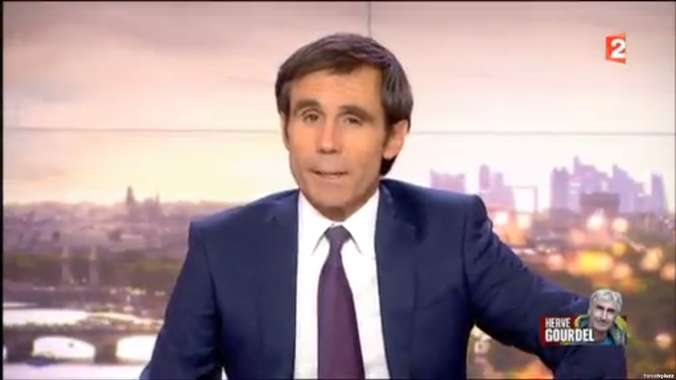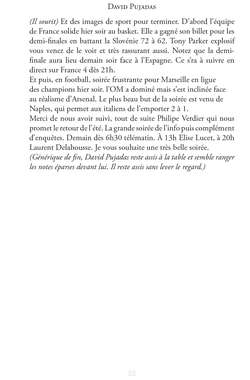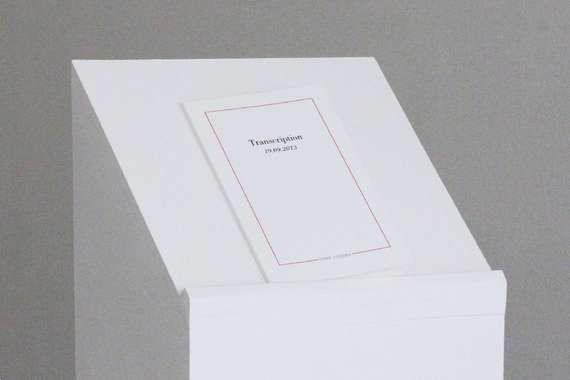D'après Transcription
by EmmaCozzani
This work has not been commented by curators.
Title
D'après Transcription
Headline
Re-staging relationship to media reality through literature and theater experience
Concept author(s)
Emma Cozzani
Concept author year(s) of birth
1989
Concept author(s) contribution
Emma Cozzani
Concept author(s) Country
France
Other author(s)
Élodie Guizard, François Kopania
Other author(s) contribution
Actors
Other author(s) Country
France
Friendly Competition
Radical intimacies: dialogue in our times (2014)
Competition category
Visual communication practice
Competition subcategory
moving
Competition field
nonacademic
Competition subfield
artist
Subfield description
An open form based on TV news reshaped into a text of classical theatrical piece and played by professional actors. It has been activated once in a art space in Nîmes (France).
Check out the Radical intimacies: dialogue in our times 2014 outlines of Memefest Friendly competition.
Description of idea
Describe your idea and concept of your work in relation to the festival outlines:
D’après Transcription is an attempt to re-create an nonexistent dialogue between mass media news and the viewer.
Based on a transcription I did of a random TV news show into a classical theater piece, D’après Transcription transforms raw news into the form of a classical theater dialogue (the lenght of the theater piece is around 1 hour).
As classical theater is about unity rules (space, action and temporality), TV news show could be considered as the formal and contemporary opposite, focusing only of the « here and now ».
D’après Transcription attempts to stage a new form of reception and interpretation of the news as in the same time the raw news it’s based on became obsolete because of theirs reenactment. The audience becomes « witnesses » of this attempt.
The professionals actors embody and personify the male and female voice-off heard but which never appears on screen.
The whole display create a fictional dialogue between these two voices which never interact.
What kind of communication approach do you use?
First I analyze and investigate closely the news system that interested me, in order to figure how it works. Then I decompose the whole system into several « steps » and I extract one specific and meaningful step from the global system, to figure out if it might still work. The extraction operation is a base from creating forms and replacing them into a specific communication system and produce a kind of deconstruction of the original experience of reception.
What are in your opinion concrete benefits to the society because of your communication?
Without their referent (the TV news show), the staged dialogues have no longer a specific status of news. The display creates a physical and conceptual distance with the original context of news. The passive viewer might have to position himself in front of the display and question the reality of the dialogues.
In front of the display, the viewer become active by watching and he is forced to exercise his critical sense. As a consequence, his own perception of the media, the viewer becomes more aware of the manipulation to which he is facing while consuming media reality.
What did you personally learn from creating your submitted work?
I learned that if mass media and communication can manipulate news, an artwork can create a more free experience through another kind of manipulation by using people’s skills and social status as artistic medium. In this artwork, I choose professionals actors not because they’re better than amateur, but because their capacities to act can be a medium as meaningful and powerful as video or installation are.
Why is your work, GOOD communication WORK?
Because its display is transparent : the condition of production, enunciation and even manipulation of the text are directly understood in the same time the « witness » is receiving informations. As the displayed work is repeated several times, the « live » aspect of D'après transcription create variations in the experience where, on the opposite, TV news shows are treating different informations in the same way all the time, day after day, producing a normalized view of reality.
Where and how do you intent do implement your work?
I would like to re-enact this project with more actors for example in various contexts (art center, theater...).
Did your intervention had an effect on other Media. If yes, describe the effect? (Has other media reported on it- how? Were you able to change other media with your work- how?)
My intervention doesn't have any effects on other medias because its main purpose is to have an influence on the spectator and the way he's interacting with mass media.

